14 Best Midjourney Alternatives To Try for Stunning AI Art

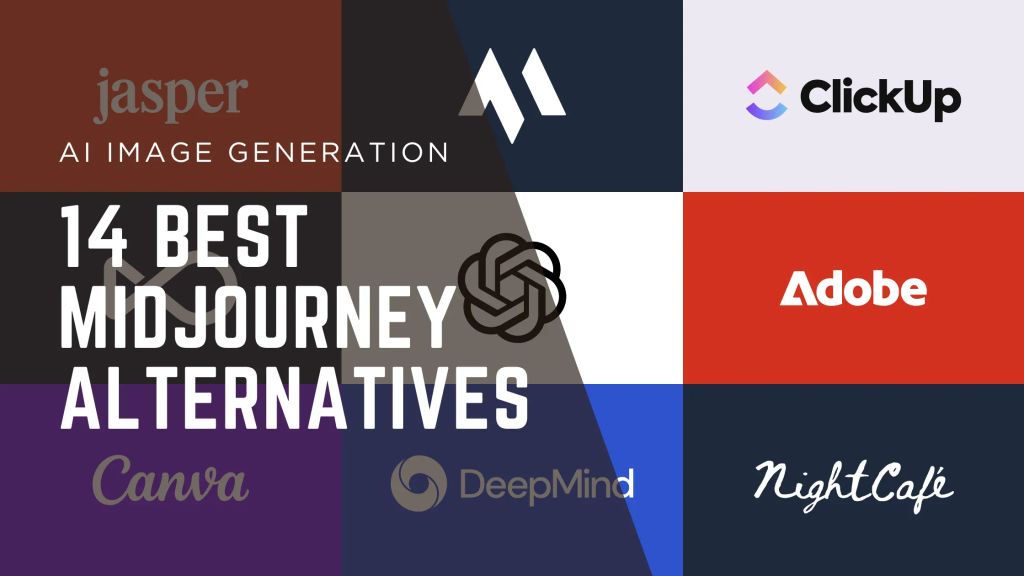
AI-generated images have taken the digital world by storm, empowering creators to generate stunning visuals in seconds. From marketing teams and social media influencers to individual artists, people everywhere are using AI tools to streamline their creative process and explore new aesthetic possibilities.
Midjourney has been one of the most talked-about platforms in this space, but it’s not the only option. Whether you’re looking for more flexibility, specific styles, or better pricing, there are plenty of Midjourney alternatives worth exploring.
In this guide, I’ll break down 14 of the best Midjourney alternatives, highlighting what each one does best, so you can find the tool that fits your needs.
How we evaluated these tools: To compile our list of the best Midjourney alternatives, we evaluated user reviews and sought-after AI image and video creation features, leveraging our expertise as AI developers to provide helpful and accurate information. |
|---|
14 Midjourney AI Alternatives
Midjourney alternative | Best For | Key Features |
|---|---|---|
1. Magic Hour | All-in-one AI image and video creation |
|
2. Adobe Firefly | AI illustrations |
|
3. Leonardo AI | User-friendliness |
|
4. Stable Diffusion | Developers and tech-savvy users |
|
5. Playground | Everyday design tasks |
|
6. NightCafe | Creating avatars and portraits |
|
7. ChatGPT (GPT-4o with DALL-E 3) | Contextual image generation |
|
8. Canva | Social media graphics |
|
9. Jasper | Exploring different styles and moods |
|
10. Flux | High-fidelity image creation |
|
11. Imagen 4 | Hyperrealism |
|
12. ClickUp | AI visual planning |
|
13. OpenArt | Exploring AI styles |
|
14. Krea | Motion-inspired designs |
|
1. Magic Hour for All-in-One AI Image and Video Creation
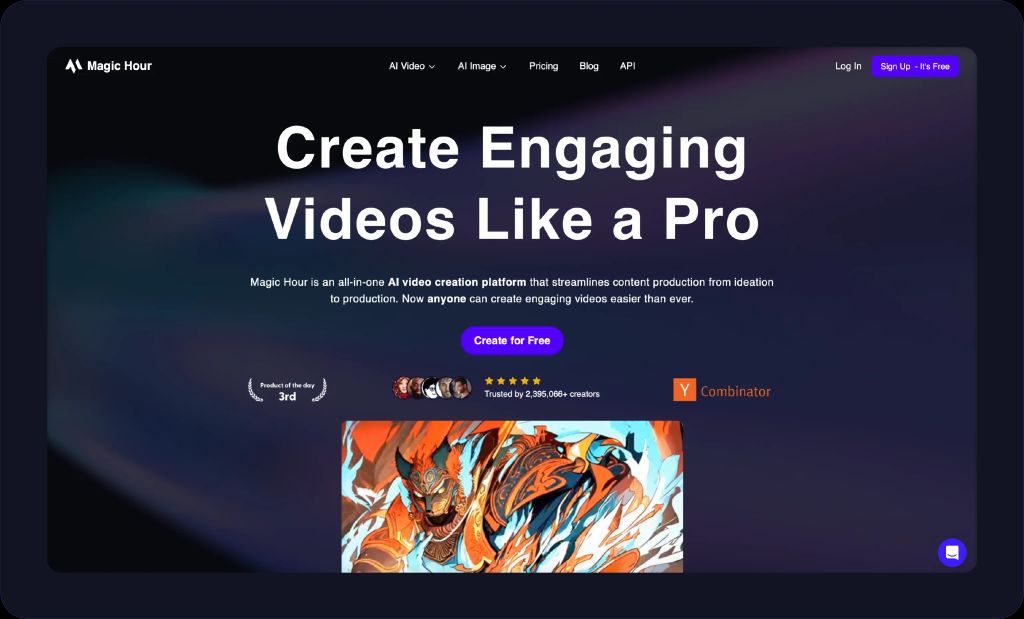

Magic Hour
Best for
All-in-one AI image and video creation
G2 rating
Key Features
- Assortment of pre-loaded image styles
- Various photo and video editing tools
- Image-to-video and video-to-video
Pricing
- Basic: Free
- Creator: $10/mo
- Pro: $49/mo
- Business: $249/mo
Pros
- Covers both image and video creation
- No sign-up needed for initial use
- Multiple niche tools in one platform
Cons
- Web-only platform
Magic Hour is a versatile AI image generator and video creation tool designed for users who want quick, easy, and beautiful results across a wide range of visual content types. It stands out as an all-in-one platform that combines image generation, video creation, face swapping, background removal, and upscaling tools into a single intuitive interface.
With 34 unique style generators, users can create tattoos, logos, sketches, interior designs, and more from text prompts or image inputs. Magic Hour runs on the Flux model, the advanced AI engine behind its image generation, delivering sharp, consistent results without requiring users to manage the model directly.
Every user has access to 20 free image generations per day without even requiring a sign-up, with an additional 100 free generations upon registration. This makes it a great Midjourney free alternative.
Some standout features include:
- AI face swap: Instantly replace faces in photos with high realism.
- Image-to-video: Animate static images with one click.
- Video-to-video: Use your imagination to transform any video by applying unique styles like “GTA,” “Anime,” or “Pixel.”
- Custom styles: Tailor generations with styles like "Pixar," "Sketchbook," or "Architectural Render."
These features make Magic Hour not only a great Midjourney alternative but also a practical creative suite for content creators, marketers, and hobbyists alike.
2. Adobe Firefly for AI Illustrations

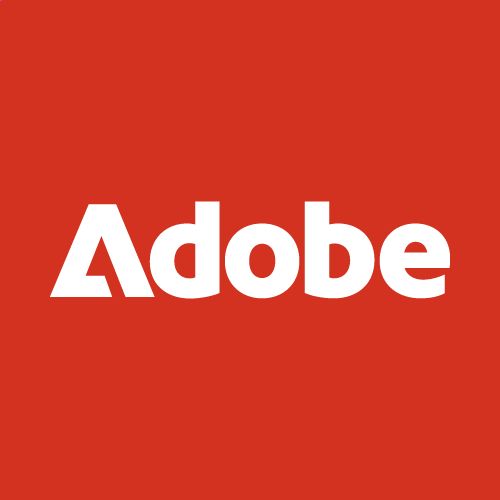
Adobe Firefly
Best for
AI illustrations
G2 rating
Key Features
- Text-to-image generation
- Generative fill
Pricing
- Standard: $9.99/mo
- Pro: $29.99/mo
- Premium: $199.99/mo
Pros
- Seamless Photoshop and Illustrator integration
- Commercial-friendly results
Cons
- Requires Adobe Creative Cloud subscription
- Less flexibility than open-source tools
Adobe Firefly is Adobe’s AI-powered design assistant that integrates seamlessly with Creative Cloud. It specializes in generating high-quality illustrations and designs using text prompts, offering tools like text effects, generative fill, and 3D-to-image transformations.
For Midjourney users looking for professional-grade outputs, Firefly is a compelling alternative. Every image generated is designed to be commercially usable, making it ideal for enterprise use. It’s also tightly integrated with Photoshop and Illustrator, which enhances its utility for professional workflows.
3. Leonardo AI for User-Friendliness
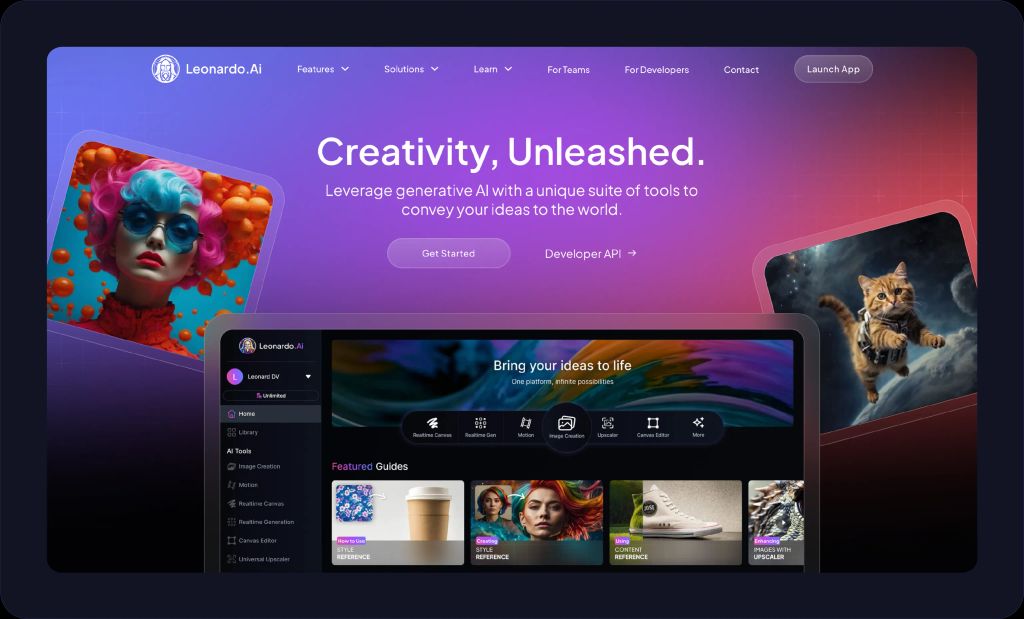
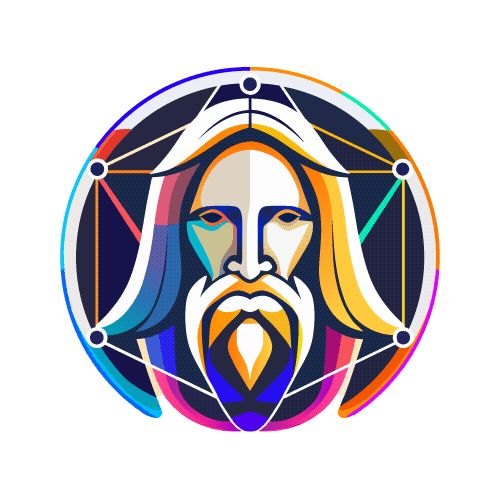
Leonardo AI
Best for
User-friendliness
G2 rating
Key Features
- Customizable generation workflows
- Batch processing
Pricing
- Free
- Apprentice: $10/mo
- Artisan: $24/mo
- Maestro: $48/mo
- Enterprise: Custom
Pros
- Beginner-friendly interface
- Built-in models for gaming and concept art
Cons
- Occasional long queue times
- Some advanced features gated behind a subscription
Leonardo AI offers an intuitive interface that makes it easy for beginners and professionals to generate high-quality digital assets, including images and assets for video game developers. It provides access to various fine-tuned models and lets users guide style, composition, and detail with precision.
Compared to Midjourney, Leonardo excels in workflow optimization, allowing batch generation and easy model switching. The platform’s real-time feedback and customization options also provide more control over the final output, which is great for users working on design or gaming projects.
4. Stable Diffusion for Developers and Tech-Savvy Users
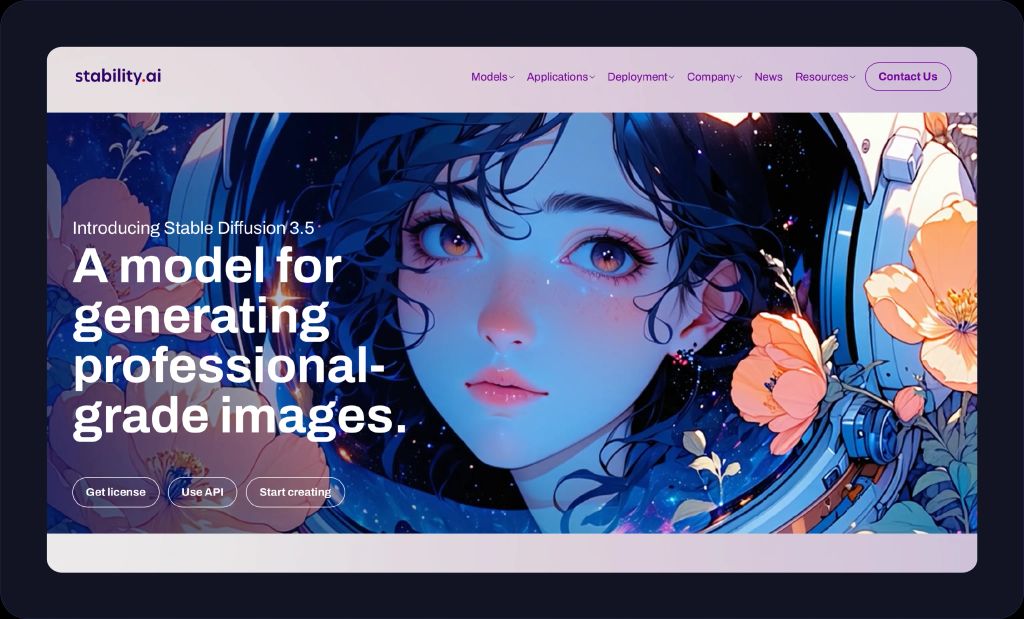

Stable Diffusion
Best for
Developers and tech-savvy users
G2 rating
Key Features
- Fully open source
- Customizable
Pricing
- Free
- Pro: $7/mo
- Max: $14/mo
Pros
- Local installation supported
- Has an active community
Cons
- Steep learning curve
- Requires GPU access
Stable Diffusion is one of the most popular open-source alternatives to Midjourney. It transforms detailed text prompts into vivid images and gives users full control over the generation process. Unlike many other platforms, it supports local installs and can be heavily customized.
This makes it perfect for technically savvy users who want to experiment with custom models and styles or train their own datasets. Its flexibility and free accessibility offer a powerful option for those who are willing to get hands-on.
5. Playground for Everyday Design Tasks
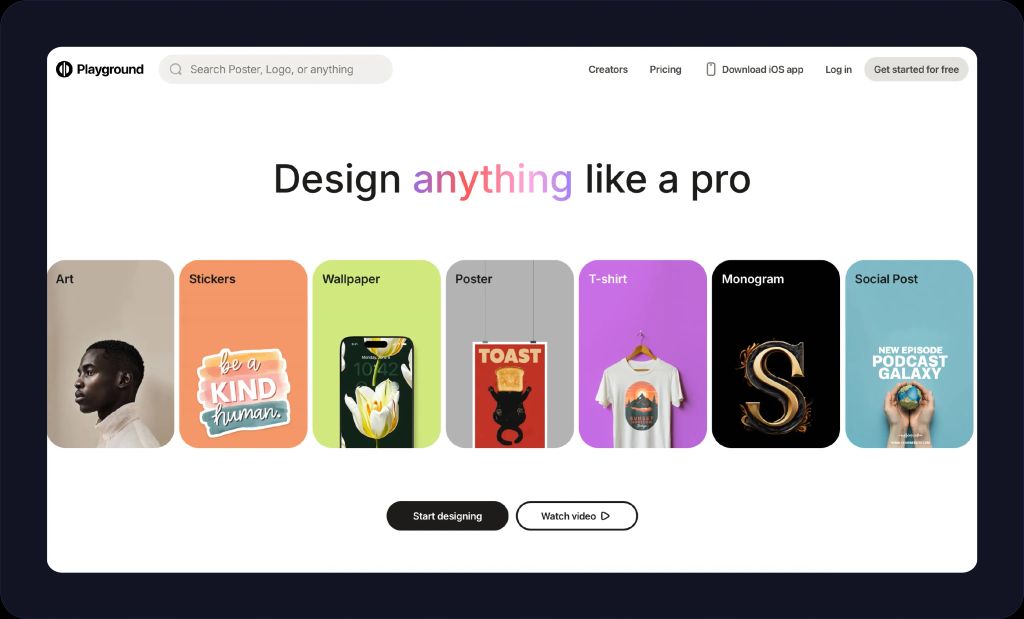

Playground
Best for
Everyday design tasks
G2 rating
Key Features
- Easy prompt generation
- 2,000 images per day with paid plan
Pricing
- Free
- Pro: $12/mo
- Team: $25/mo
Pros
- Great for non-designers
- Fast image generation
Cons
- Lower detail level than Midjourney
- Fewer customization options
This Midjourney competitor is designed for speed, simplicity, and utility. It’s great for marketers, students, and casual users who want to generate visuals for blog posts, social media, or design mockups without learning complex prompts or interfaces.
While Playground may not offer the photorealism of Midjourney, this social media tool compensates with ease of use and generous free image limits, allowing for up to 2,000 per day in the pro plan. It also includes editing tools and a simple timeline for version control.
6. NightCafe for Creating Avatars and Portraits
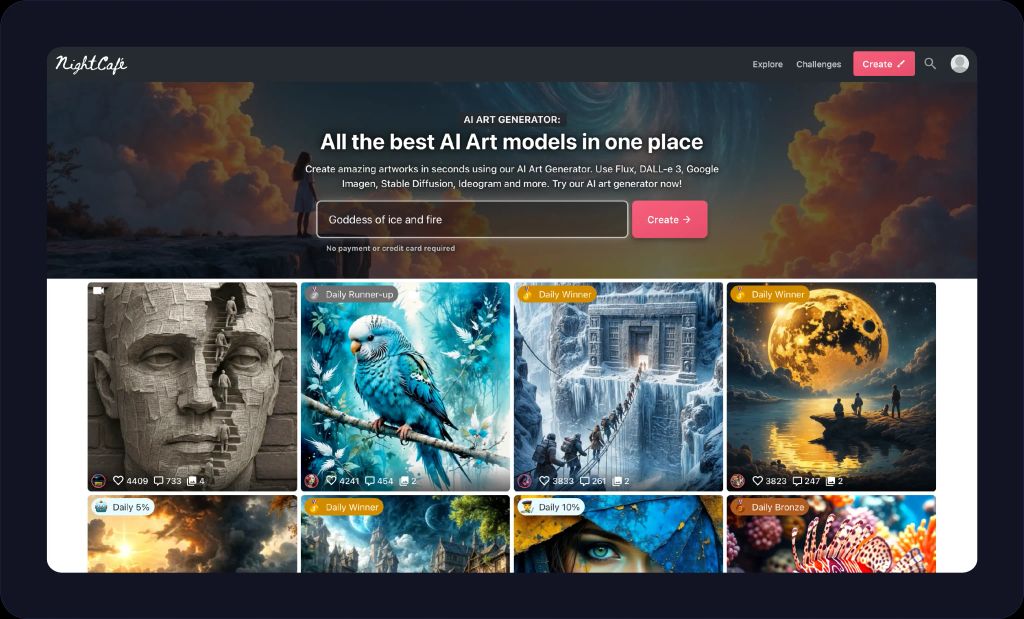
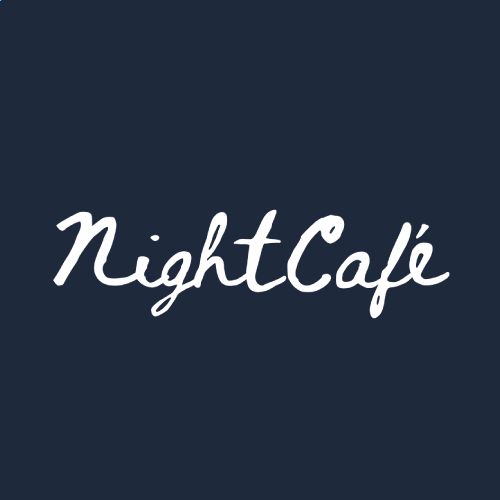
NightCafe
Best for
Creating avatars and portraits
G2 rating
Key Features
- Uses VQGAN+CLIP and other models
Pricing
- Beginner: $4.49/mo
- Hobbyist: $7.49/mo
- Enthusiast: $14.99/mo
- Artist: $37.49/mo
Pros
- Strong community
- Social tools
- Simple interface
Cons
- Less photorealistic than other tools
- Requires credits for generation
NightCafe is AI similar to Midjourney that has built a loyal community around AI art, with a strong emphasis on user engagement through challenges, collections, and social features. It shines when it comes to portraits, avatars, and stylized creations.
Unlike Midjourney’s sometimes surreal outputs, NightCafe allows users to explore different models like VQGAN+CLIP and CLIP-Guided Diffusion, offering a broader range of artistic outputs. This Midjourney AI alternative is ideal for hobbyists and creators looking to experiment with diverse looks.
7. ChatGPT (GPT-4o with DALL-E 3) for Contextual Image Generation
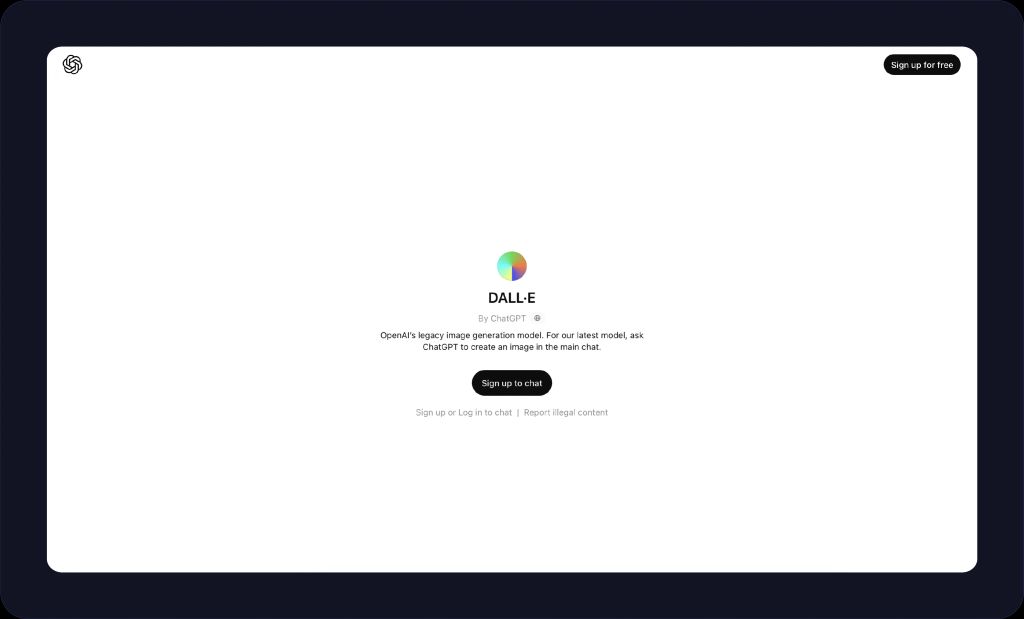
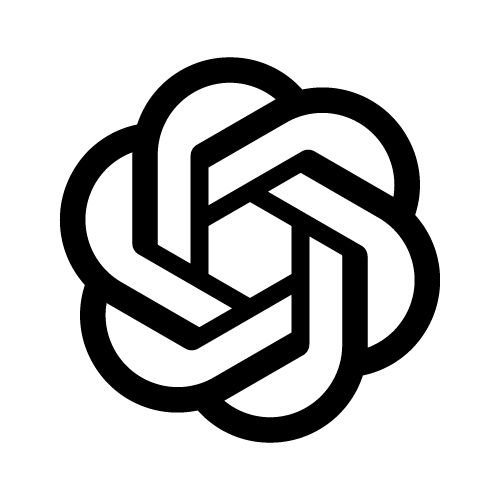
ChatGPT (GPT-4o with DALL-E 3)
Best for
Contextual image generation
G2 rating
Key Features
- Inline image generation
- Integrated into GPT-4o for a seamless experience
Pricing
- Free
- Plus: $20/mo
- Pro: $200/mo
- Team: $25/mo or $30/mo
- Enterprise: Custom
Pros
- Easy iterative refinements
- Combines image and text generation
Cons
- Fewer stylized outputs than Midjourney
- Some inconsistencies with image details
With the latest GPT-4o model and DALL-E 3 integration, ChatGPT now lets users create images directly from detailed prompts within an ongoing conversation. This is an app like Midjourney that makes it ideal for users who want more interactive control over their image generation process.
While Midjourney focuses heavily on visual output, ChatGPT with DALL-E 3 brings the benefit of contextual awareness. You can build on prior prompts, refine generations, and ask for variations — all in one thread.
8. Canva for Social Media Graphics
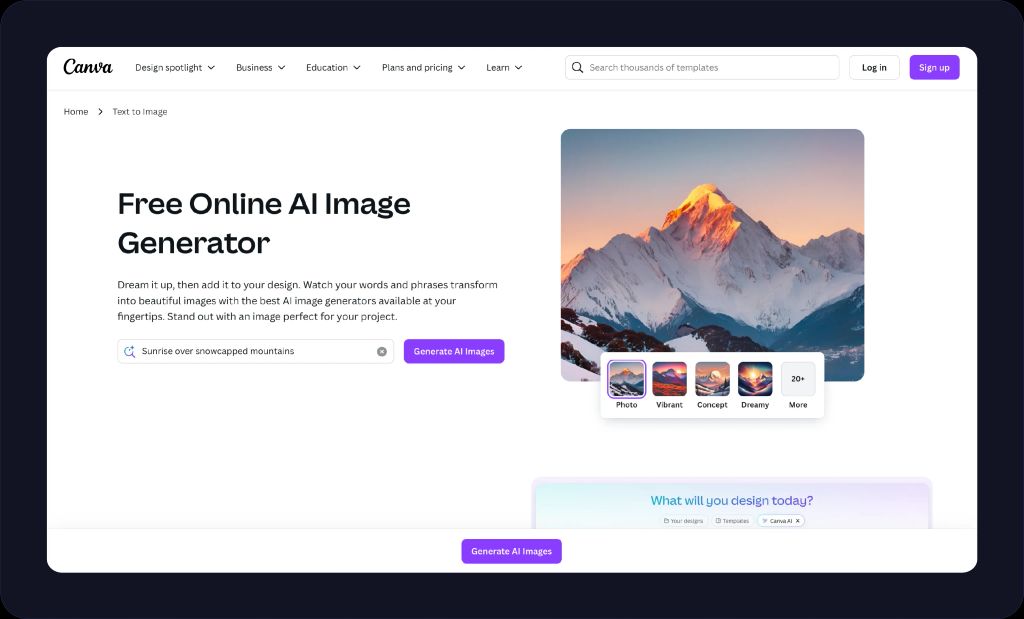

Canva
Best for
Social media graphics
G2 rating
Key Features
- Prompt-based image generation
- Animation capabilities
Pricing
- Free
- Pro: $120/year
- Teams: $100/year
- Enterprise: Custom
Pros
- Beginner-friendly
- Ideal for social media assets
Cons
- Limited creativity in AI styles
- Output quality can vary
Canva has been a go-to platform for graphic design for a while now, and its recent addition of AI image generation makes it even more powerful for social media creators. It allows users to type in prompts and instantly generate visuals directly in their design canvas.
For users already embedded in Canva’s ecosystem, this AI feature makes it better than Midjourney because you don’t need to export and import assets. It’s ideal for fast turnarounds on marketing and branded content.
9. Jasper for Exploring Different Styles and Moods
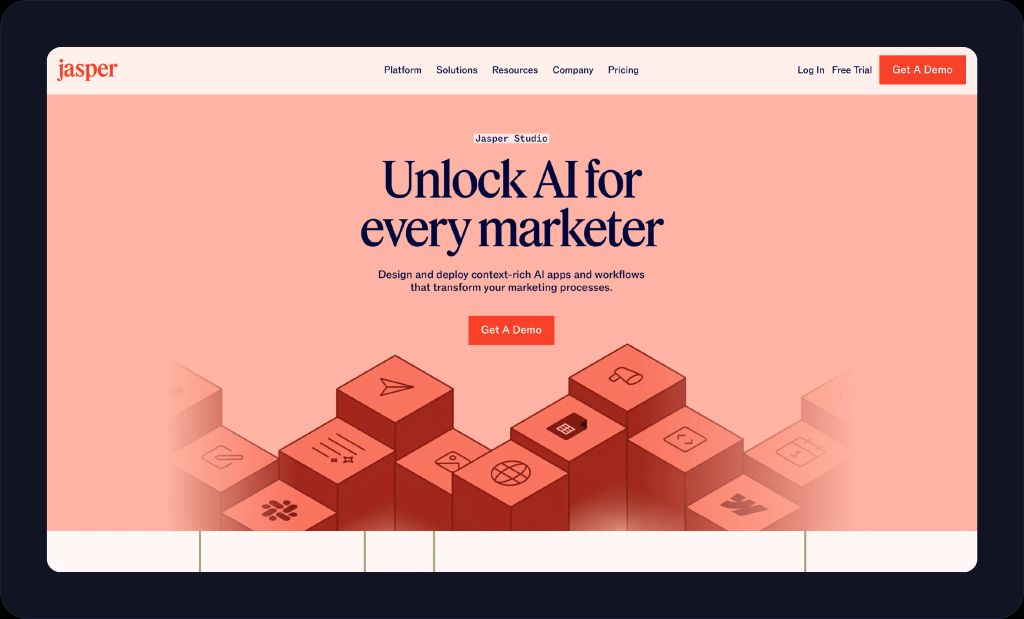

Jasper
Best for
Exploring different styles and moods
G2 rating
Key Features
- Mood-based visual generation
- Fast outputs
Pricing
- Creator: $49/mo
- Pro: $69/mo
- Business: Custom
Pros
- Tailored for content marketing
- Integrates with Jasper AI writing assistant
Cons
- Less creative range than Midjourney
- Limited customization tools
Jasper Art is one of the sites like Midjourney that focuses on high-quality, stylized visuals that match specific moods or themes. It’s an offshoot of the Jasper AI writing tool, so it integrates well with content marketing workflows.
If you're using Midjourney to create blog visuals, illustrations for social posts, or mood boards, Jasper Art offers similar results with the bonus of being optimized for marketers and content creators.
10. Flux for High-Fidelity Image Creation
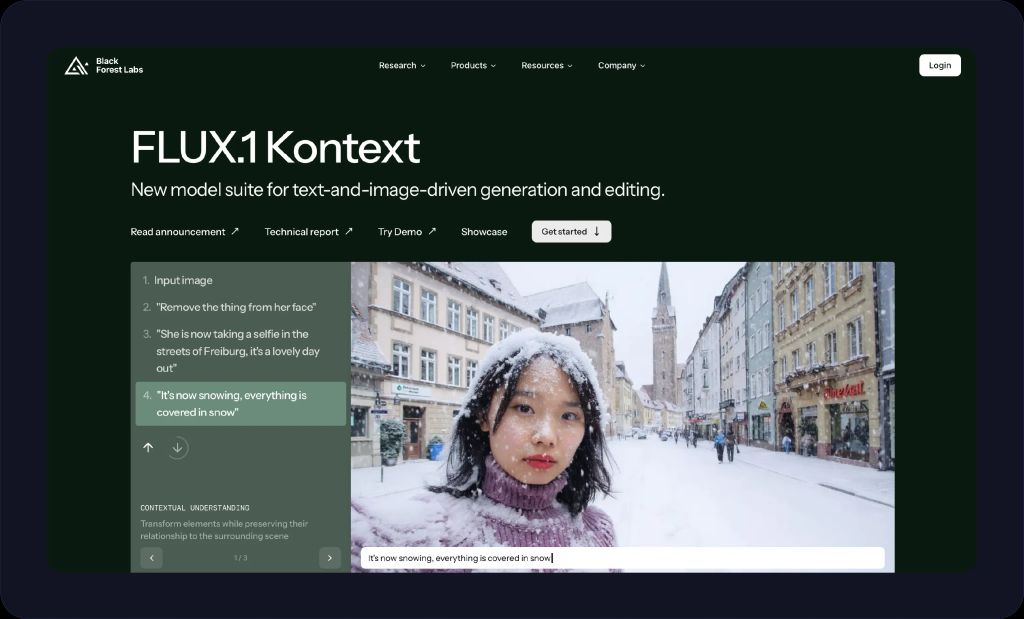
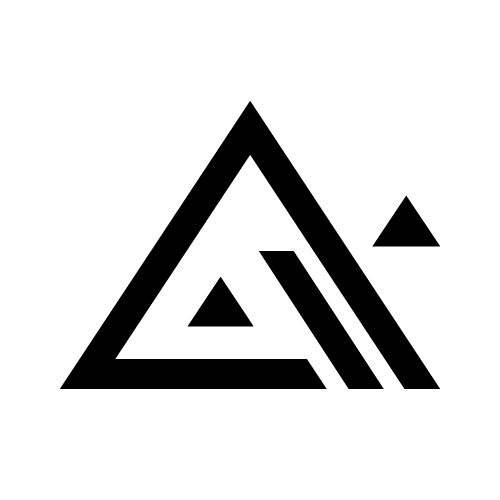
Flux
Best for
High-fidelity image creation
G2 rating
Key Features
- Clean, detailed renderings
- Available across multiple platforms
Pricing
- Starter: $15/mo
- Pro: $39/mo
- Teams: $49/mo
- Enterprise: Custom
Pros
- Professional-grade outputs
- Full creative control
Cons
- Requires comfort with open-source tools and workflows
- Users need a quality GPU
Flux is a relatively new but powerful tool designed for professional-grade image generation. It’s known for producing clean, highly detailed outputs that rival what Midjourney offers.
Because it powers several other platforms, Flux is an excellent choice for users who want consistency, clarity, and advanced control in their image generation pipeline.
11. Imagen 4 for Hyperrealism
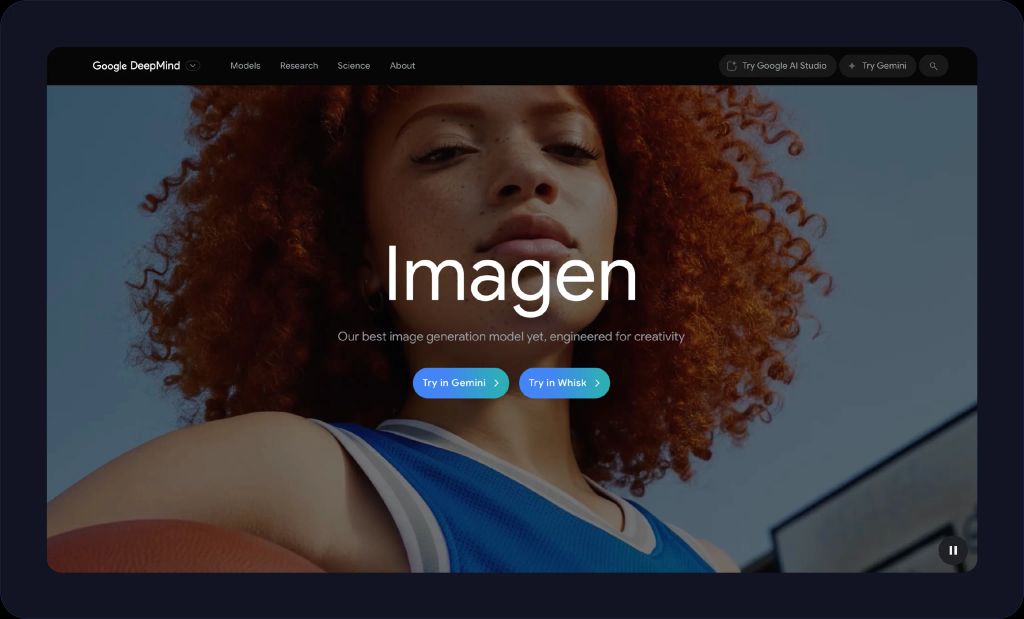

Imagen 4
Best for
Hyperrealism
G2 rating
Key Features
- High-resolution, lifelike outputs
- Minimal prompt inputs required
Pricing
- $.03/image
- $0.35/second of video
Pros
- Market-leading realism
- Built by Google DeepMind
Cons
- Limited public access
- No native UI
Imagen 4 is Google DeepMind’s latest model engineered for photorealism. Its strength lies in generating crisp, detailed, and accurate imagery with minimal prompting, which is ideal for commercial and editorial work.
While Imagen 4 is not yet publicly available as a standalone product, it sets the bar for what’s possible in AI art generation. Those seeking Midjourney alternatives with high realism will find Imagen-based tools intriguing.
12. ClickUp for AI Visual Planning
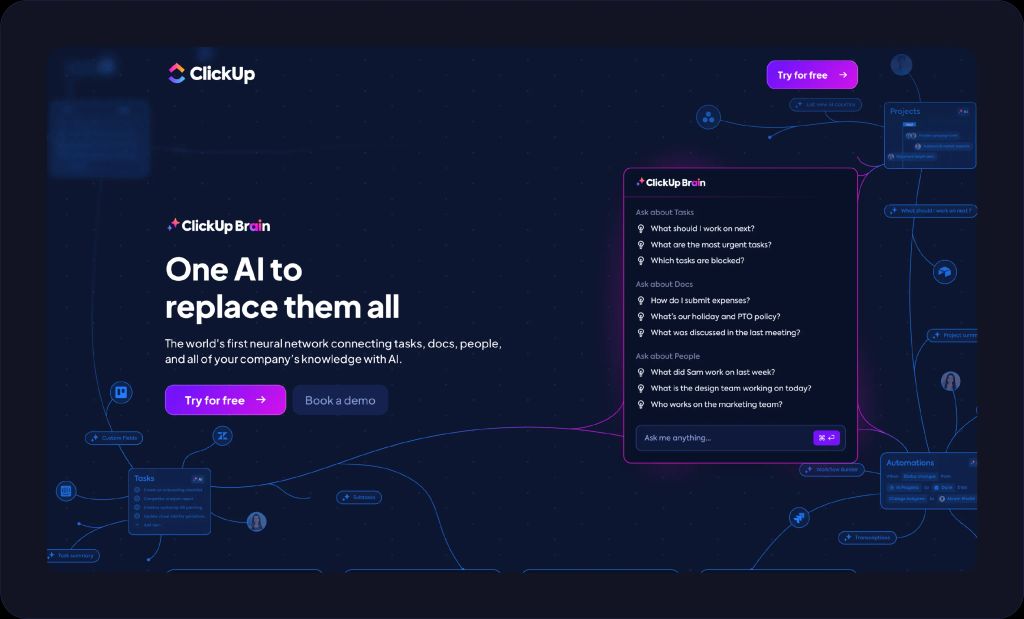
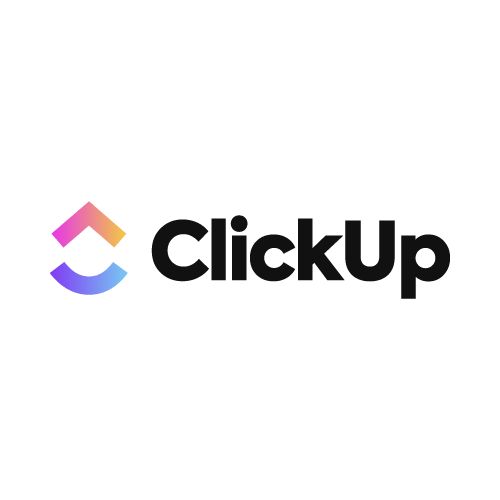
ClickUp
Best for
AI visual planning
G2 rating
Key Features
- Whiteboards
- Brainstorming tools
Pricing
- Free
- Unlimited: $10/mo
- Business: $19/mo
- Enterprise: Custom
Pros
- Centralized team collaboration
- Helpful for upstream ideation
Cons
- Not a direct image generation tool
- Can be overwhelming for solo creators
ClickUp offers AI-powered features for brainstorming, creative planning, and visual collaboration. If your Midjourney use case involves team-based ideation or mood board creation, ClickUp can support the upstream creative process. Its AI writing assistant and whiteboard features can also enhance how teams generate and refine creative concepts before moving to a visual tool.
13. OpenArt for Exploring AI Styles
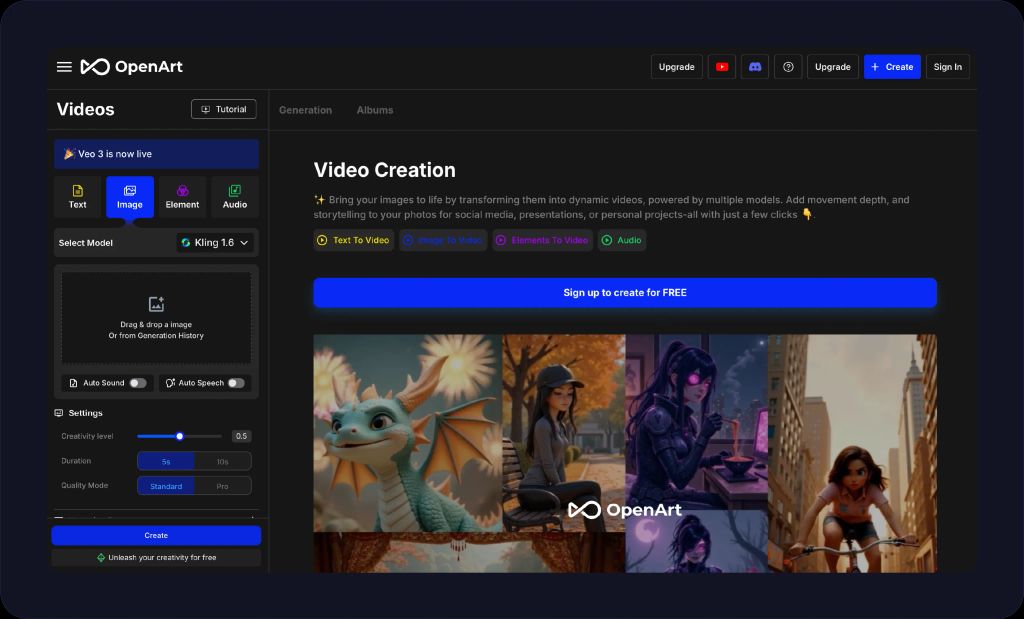

OpenArt
Best for
Exploring AI styles
G2 rating
Key Features
- Massive AI style gallery
- Remix features
Pricing
- Free
- Essential: $14/mo
- Advanced: $29/mo
- Infinite: $56/mo
- Team Plan: $34.90/mo
Pros
- Community-driven
- Allows for model customization
Cons
- Slight learning curve
- Fewer commercial safeguards
OpenArt provides users with an extensive gallery of AI-generated artworks and lets users train or fine-tune models for specific styles. It’s ideal for those who want to browse, remix, and experiment with a wide range of aesthetics.
Compared to Midjourney, OpenArt is more community-driven, giving users access to niche and cutting-edge styles beyond the mainstream.
14. Krea for Motion-Inspired Designs

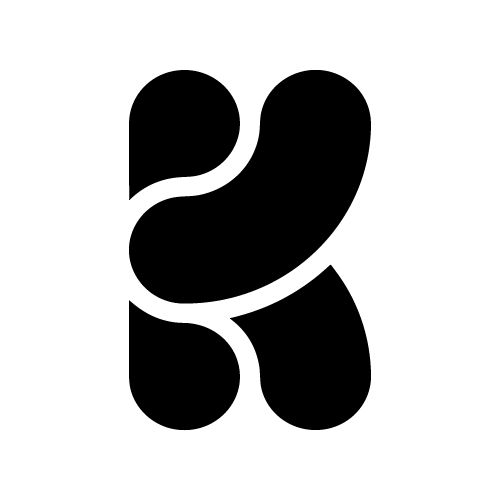
Krea
Best for
Motion-inspired designs
Key Features
- Motion-inspired visual rendering
- Cinematic aesthetics
Pricing
- Free
- Basic: $10/mo
- Pro: $35/mo
- Max: $60/mo
Pros
- Focuses on emotion and movement
- Offers unique art styles
Cons
- Limited general-purpose functionality
- Users need to pay to connect with most models
Krea is known for its motion-forward, kinetic visual styles and unique rendering techniques. It offers a fresh take on AI art, focusing more on fluid lines, cinematic lighting, and abstract visuals. For creators looking to make bold, dynamic art that stands apart from Midjourney’s usual style, Krea offers a new visual language worth exploring.
How To Choose the Best Midjourney Alternative
Choosing the right Midjourney alternative depends on your creative goals, technical skill, and output needs. Here are a few tips to help guide your decision:
- Define your use case first: Knowing your initial goals helps you prioritize features like realism, speed, or format variety. This can differ between users who want to create social media graphics, concept art, or videos.
- Check output quality, not just sample images: Try generating your own test images. Sample galleries can be curated, but what matters is the quality of results from your own prompts.
- Look for customization and style control: Some platforms allow you to tweak models, train your own, or apply styles like “Anime” or “Pixar.” These controls are crucial if you want consistent outputs.
- Compare free vs. paid plan limits: Some tools offer generous free plans or a certain number of uses at no charge, while others gate capabilities behind subscriptions. Weigh this against your expected usage.
- Check generation speed and queue times: One of the main benefits of Midjourney is its speed. Make sure your alternative can keep up, especially if you’re working on deadlines.
- See if commercial usage is allowed: Checking the licensing terms is crucial if the images are being used commercially. Not all platforms allow commercial use of generated content by default.
- Consider ease of use and UI intuitiveness: An intuitive interface can save new users a lot of time. Look for tools that have easy-to-use features like drag-and-drop functionality and real-time previews.
Ready To Explore Midjourney Alternatives? Start With Magic Hour
Whether you’re looking for more customization, faster rendering, or unique features that Midjourney doesn’t offer, there are many options for AI art. From open-source platforms to design tools that integrate with ecosystems you’re already using, these Midjourney alternatives let you tailor your creative workflow to your exact needs.
Magic Hour was created to be an all-in-one alternative. With tools for face swapping, image-to-video generation, background removal, and over 30 distinct styles, it’s perfect for creators who want everything in one place.
Sign up for free today and try Magic Hour’s tools to see how easy it is to create stunning visuals.
Midjourney Alternatives FAQ
What Are Some Pros and Cons of Using AI Image Generators?
AI image generators are used to create art at scale, quickly, and at a low cost. Some downsides include varying quality, limited customizations, and legal ambiguity around AI-generated content.
What Are Some Use Cases of AI Image Generators?
Some common AI image generator use cases include:
- Social media graphics
- Blog illustrations
- Concept art
- Product mockups
- Mood boards
- Marketing campaigns
- Motion design when paired with video tools
Is There a Free Alternative to Midjourney?
There are many free alternatives to Midjourney, including Magic Hour. It’s a free AI image generator like Midjourney that gives you daily credits at no charge.
